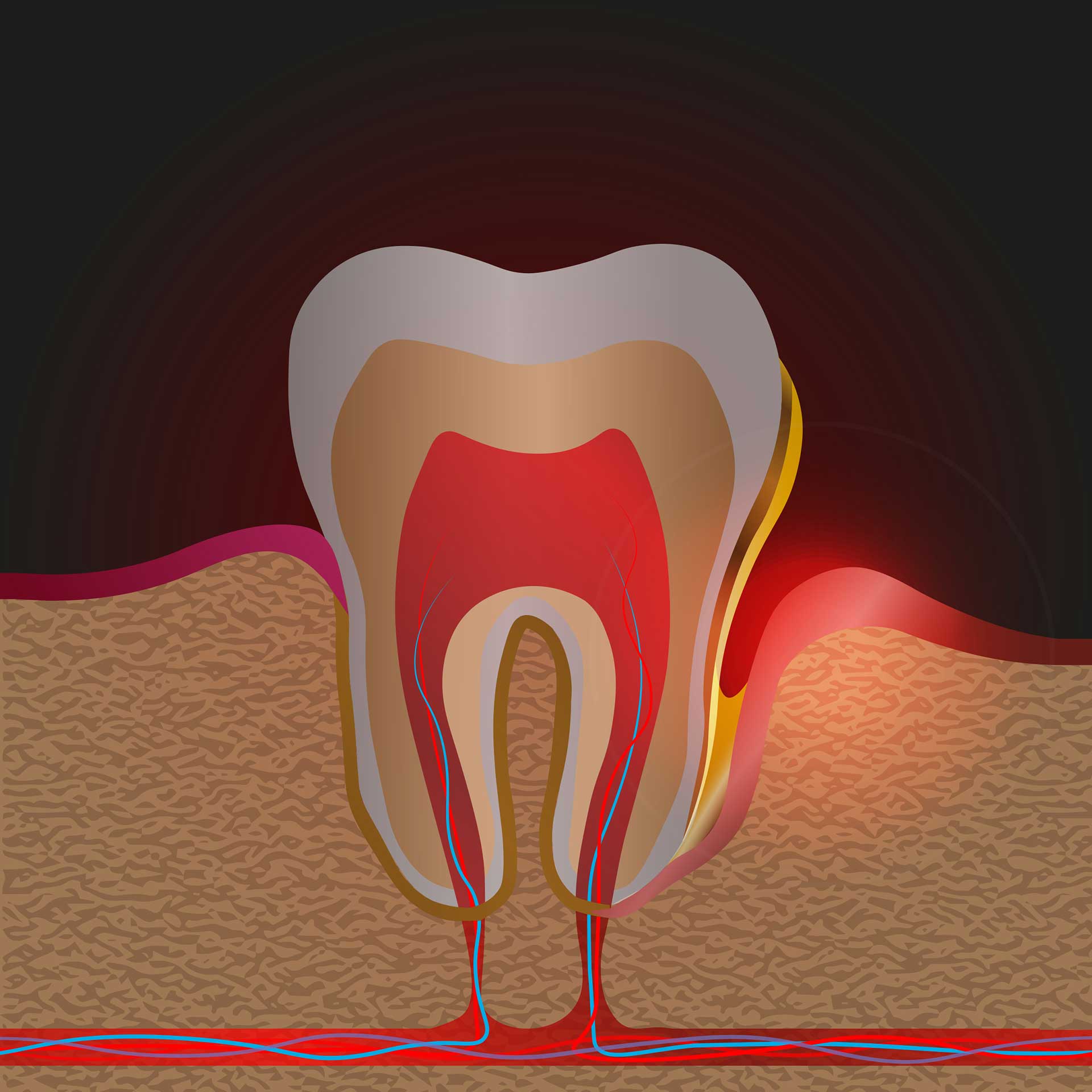A gum pocket is a space that forms between the gum and the tooth and can deepen over time. The deepening of these pockets is a common symptom of gum disease. It can lead to damage to the surrounding soft tissues. The treatment of gum pockets depends on the stages of gum disease, so early diagnosis is important.
What is a Gum Pocket?
A gum pocket is a space that forms between the gum and the tooth. This space can extend from the point where the gum attaches to the tooth down to the tooth root. As the pocket deepens, the gap between the gum and the tooth becomes larger. This condition is seen as one of the symptoms of gum disease.
Gum pockets can be caused by various factors related to gum disease. Plaque, gum inflammation and gum disease can contribute to the formation of gum pockets. Additionally, inadequate brushing and flossing can also lead to the development of gum pocket.
What Causes Gum Pockets?
Gum pockets are usually a sign of gum disease (periodontal disease). Gum disease occurs due to inflammation and infection of the gum tissue. Gum pockets appear when gum disease progresses.
Bacteria grow within a sticky substance called plaque. Over time, it hardens and forms deposits known as tartar (dental calculus). Plaque and tartar damage the gums and cause inflammation.
Symptoms of gum disease include redness, swelling, bleeding and pain in the gums. The deepening of gum pockets is also one of these symptoms.
Factors that contribute to the formation of gum pockets include excessive brushing or flossing, gum recession due to tooth extraction or cavities.
Gum disease and gum pockets can cause serious problems for oral health. Therefore, it is important to regularly practice oral hygiene, brush your teeth, use dental floss and regularly visit your dentist for periodic check-ups in accordance with the recommendations of dentists.
What are the Symptoms of Gum Pockets?
When gum pocket form, you may observe swelling, redness and bleeding in the gums. Bad breath, gum pain and tooth sensitivity are also symptoms of gum pockets. Deep gum pockets can cause gum tissue recession and loosening of the teeth.
How is Gum Pocket Treated?
The treatment of a gum pocket varies depending on the stages of gum disease and the depth of the gum pocket. Early diagnosis and treatment prevent further deepening of the gum pocket and progression of gum disease.
Dentists can use several different methods for the treatment of gum pocket, including:
- Gum pocket cleaning: Dentists can clean the plaque and tartar in the gum pockets using a special instrument. This procedure is usually done under local anesthesia.
- Antibiotic treatment: In some cases, antibiotics may be prescribed for the treatment of gum pockets. Antibiotics are used to control the infection and stop the progression of gum disease. However, after the acute condition passes, mechanical intervention as mentioned in the previous method should also be applied. Otherwise, antibiotic treatment alone will be a temporary solution since the underlying causes (such as dental calculus and bacterial plaque) remain.
- Surgical treatment: Surgical intervention may be necessary for deep gum pockets. Dentists can reduce the size of the gum pocket by cutting the gum tissue and cleaning the tooth roots. In some cases, procedures such as bone grafting or gum grafting may also be required.
What Can be Done to Prevent The Formation of Gum Pockets?
To prevent the formation of gum pockets, it is important to tighten your oral hygiene routine. Brushing your teeth at least twice a day and using dental floss can help prevent plaque and tartar buildup. Additionally, avoiding smoking and adopting a healthy diet can also help prevent gum diseases.
